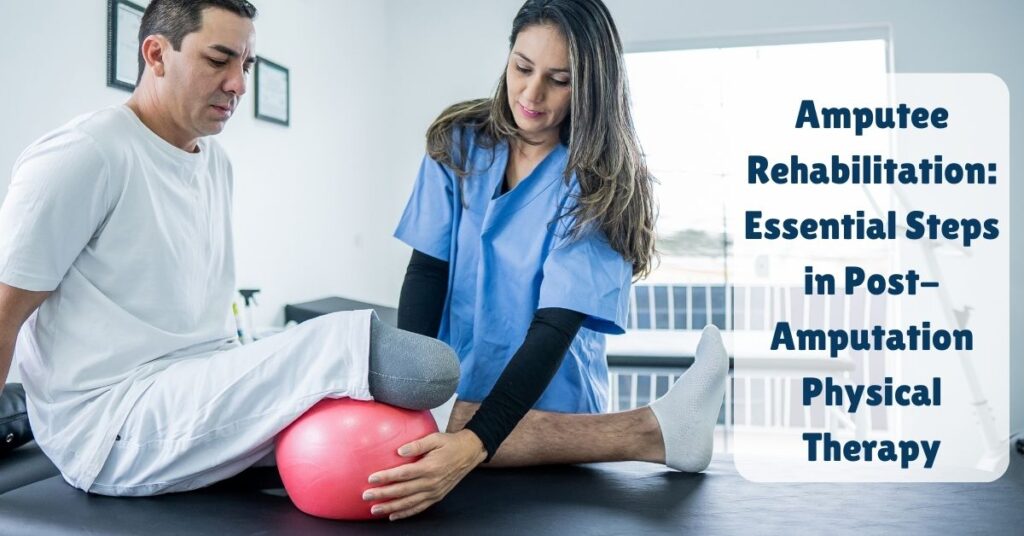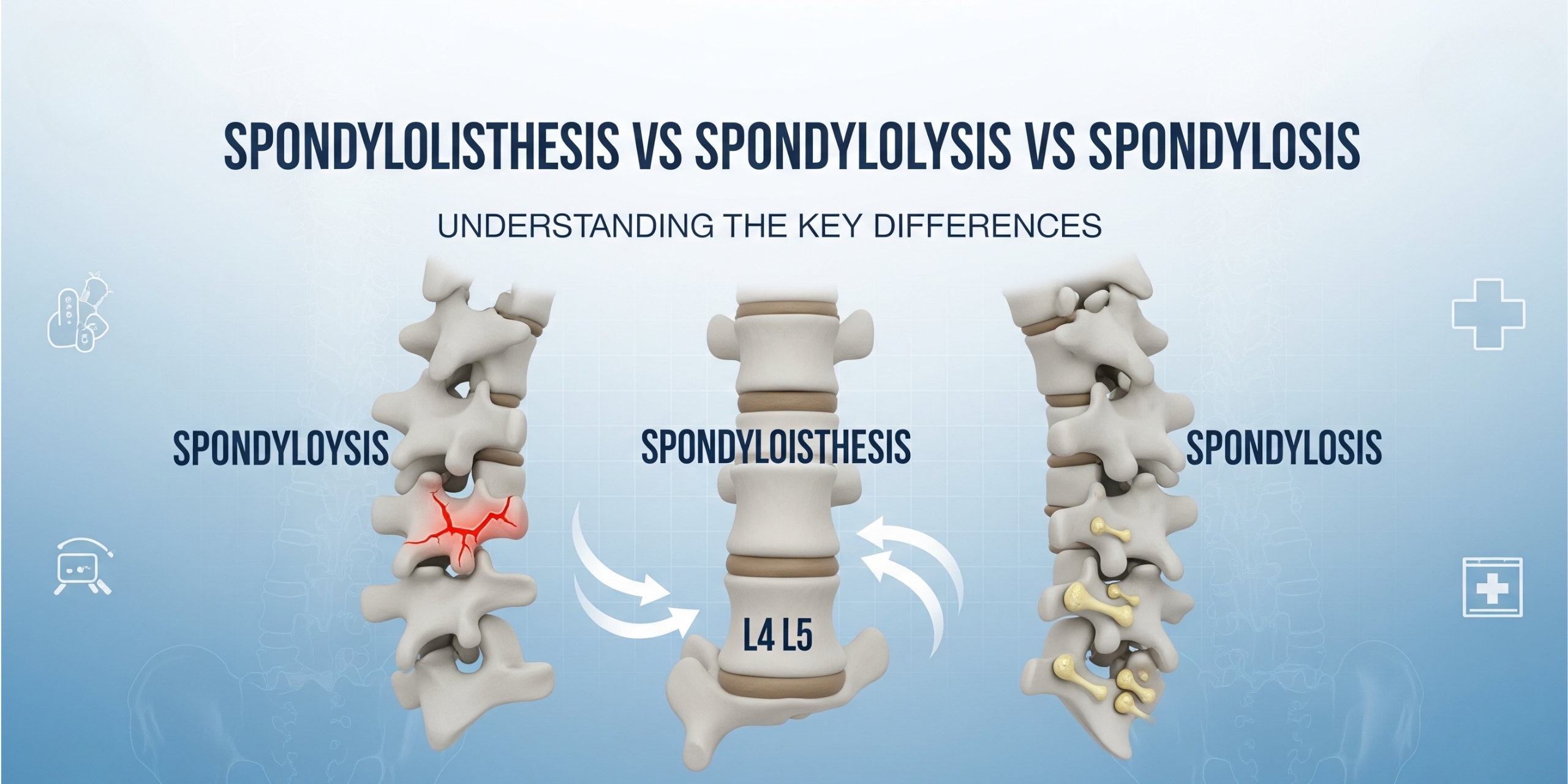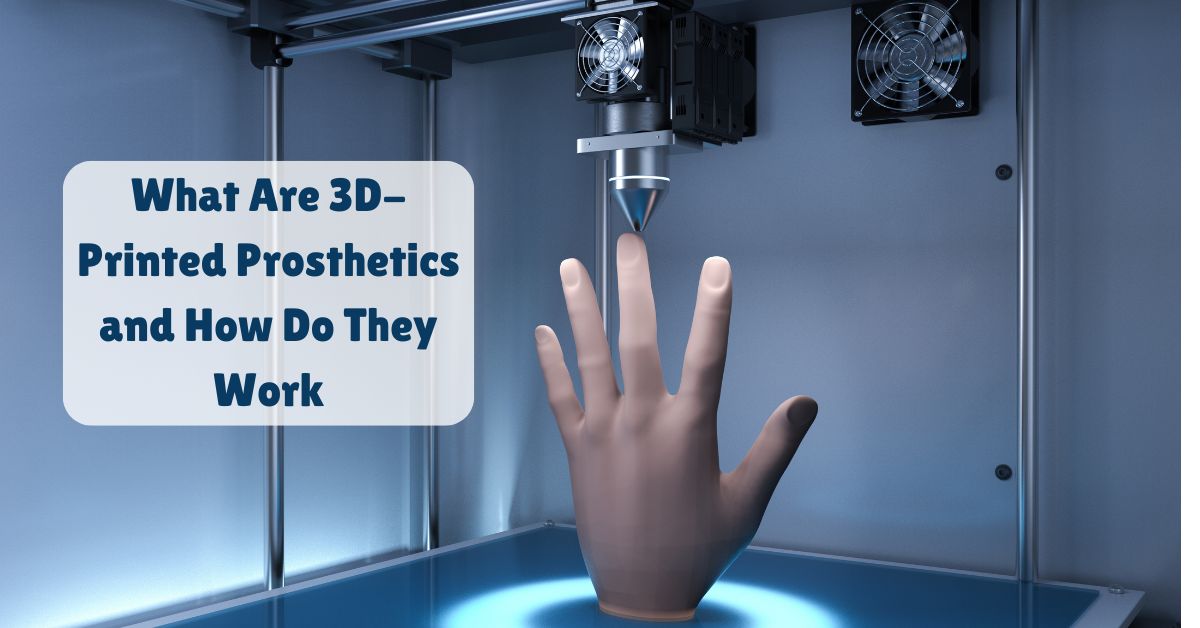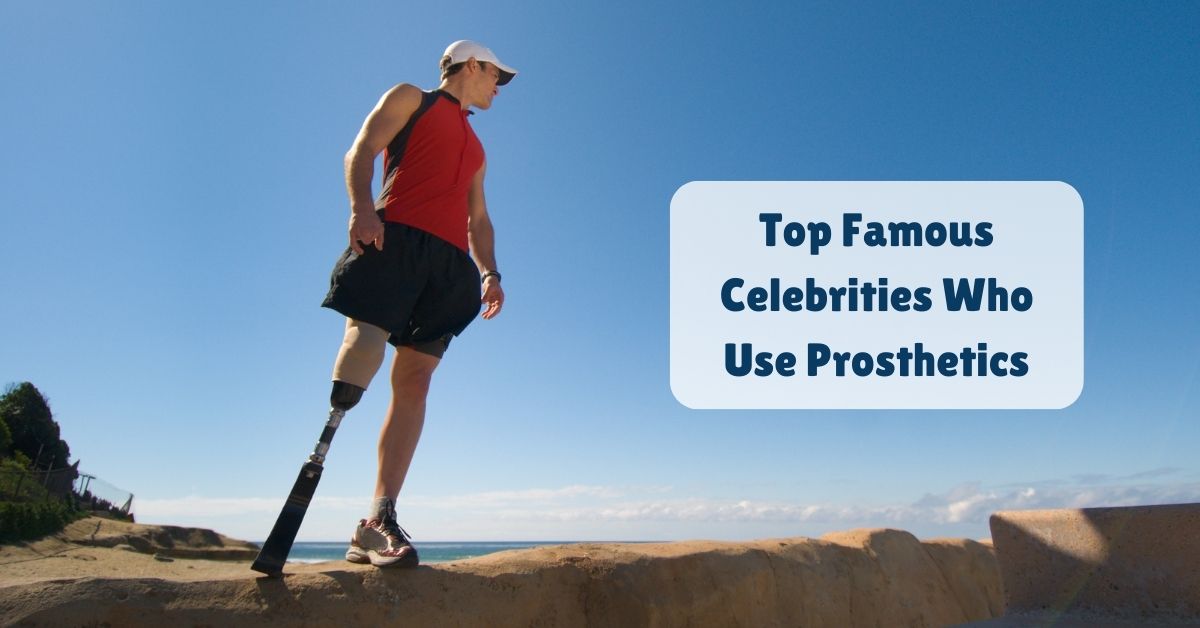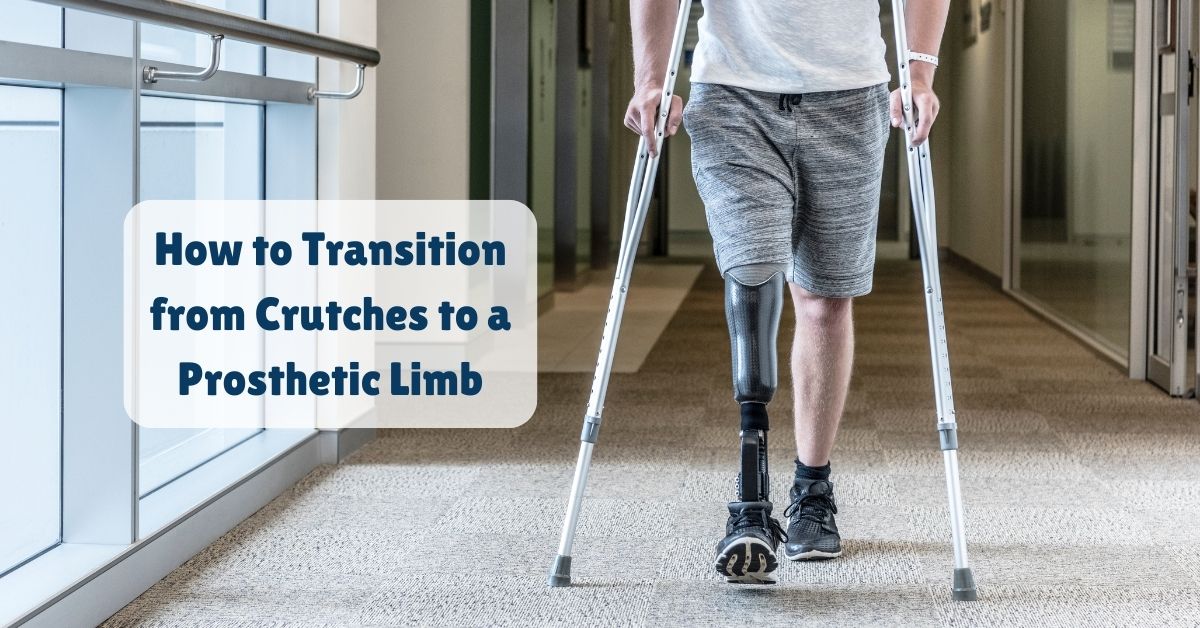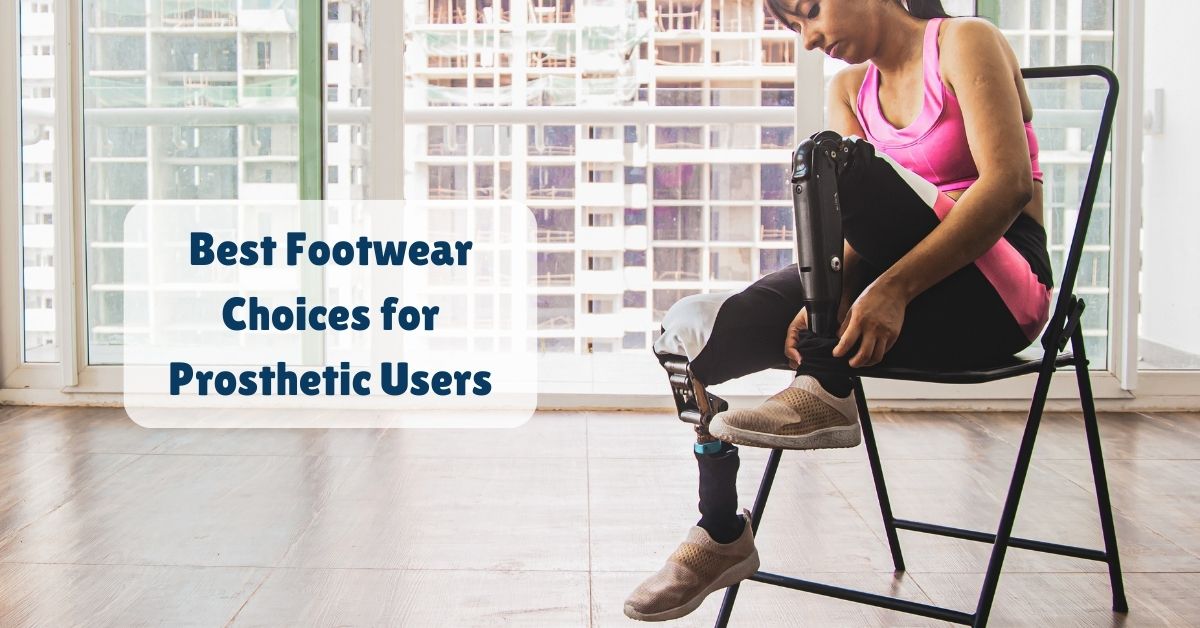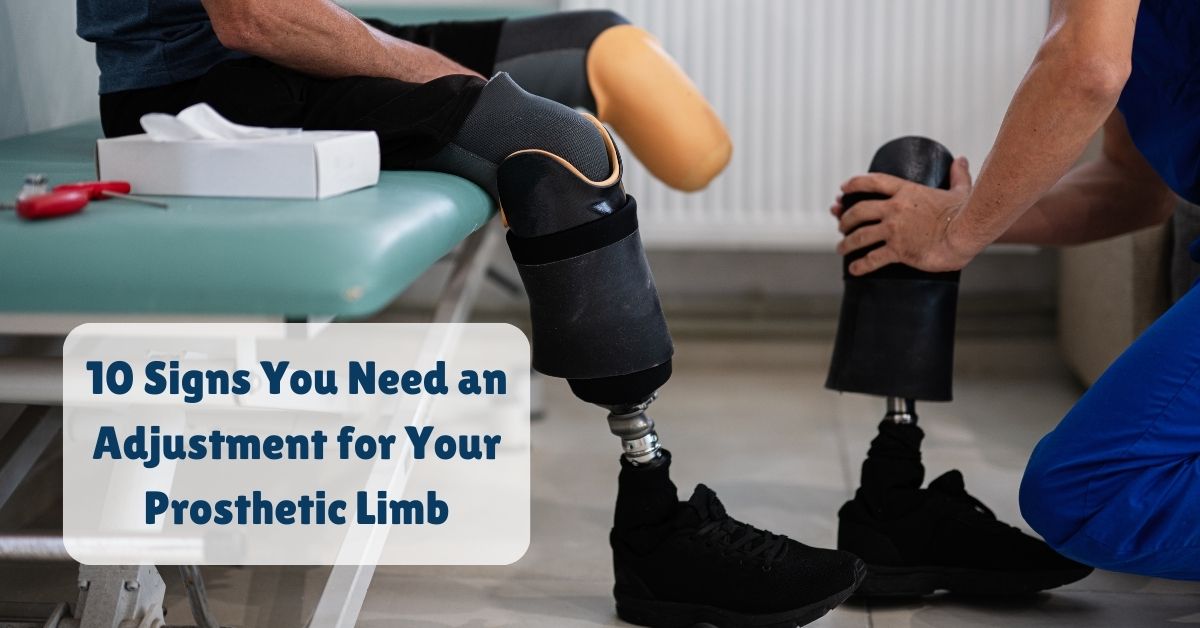Recovering from an amputation is a journey that requires patience, strength, and support. Physical therapy is a key part of this recovery process, helping individuals regain their ability to move, build strength, and adjust to life with a prosthetic limb. It’s not just about healing the body; it’s about rebuilding confidence and independence. From managing pain and improving mobility to learning how to use a prosthesis, physical therapy provides the tools and guidance needed to face the challenges of life after amputation and move forward with a positive outlook.
What is Physical Therapy for Amputees and How Physical Therapy Helps Amputees Recover
Physical therapy is a critical component of amputation rehabilitation. It’s a specialized program that focuses on helping amputees regain strength, flexibility, and mobility. A physical therapist works closely with the individual to address a variety of needs, including pain management, muscle strengthening, and improving balance. The ultimate goal is to help amputees adapt to their new reality, teaching them how to perform daily activities and use assistive devices effectively.
Key aspects of physical therapy for amputees include:
Pain Management: Techniques such as massage, stretching, and the use of hot or cold therapy can significantly reduce discomfort.
Strength and Endurance: Exercises that build muscle strength and endurance are essential for overall fitness and prosthetic use.
Flexibility and Range of Motion: Stretching and joint mobilization exercises help maintain and improve flexibility, which is crucial for movement and balance.
Daily Living Skills: Training in everyday tasks, such as dressing and bathing, empowers amputees to live more independently.
The Importance of Physical Therapy in Rehabilitation
Physical therapy is essential in helping individuals adapt to prosthetics and orthotics. Here’s how:
Personalized Training
When you first receive a prosthetic or orthotic device, it can feel strange and challenging to use. A physical therapist works with you one-on-one to develop a personalized training plan. This plan includes exercises and techniques tailored to your specific needs and goals, ensuring you gain the most benefit from your device.
Improving Mobility and Function
Physical therapists teach you how to move with your new device. This includes walking, climbing stairs, and performing daily activities. They focus on improving your balance, strength, and coordination, helping you move more naturally and efficiently.
Reducing Pain and Discomfort
Using a new prosthetic or orthotic device can sometimes cause pain or discomfort. Physical therapists help address these issues by adjusting the fit of the device and providing exercises that reduce strain and improve comfort.
Enhancing Confidence and Independence
Learning to use a prosthetic or orthotic device can be emotionally challenging. Physical therapists provide not only physical support but also emotional encouragement. They help build your confidence, so you feel more independent and capable in your everyday life.
Enhances Functional Skills: Gaining confidence in performing daily tasks leads to a greater sense of independence and control over one’s life.
What to Expect in Physical Therapy?
Initial Assessment
Your first visit to a physical therapist will involve an assessment of your current mobility, strength, and the specific challenges you face with your new device. This helps the therapist create a customized plan for you.
Goal Setting
Together with your therapist, you’ll set realistic and achievable goals. These goals could range from walking a certain distance without discomfort to being able to perform specific tasks like cooking or gardening.
Regular Sessions
Physical therapy involves regular sessions where you’ll work on exercises and techniques to improve your use of the prosthetic or orthotic device. These sessions are hands-on and may include various activities designed to build your skills progressively.
Ongoing Support
Physical therapy doesn’t end when you become proficient with your device. Regular follow-up sessions ensure that you continue to improve and that any new issues are promptly addressed. This ongoing support is crucial for long-term success and comfort.
The Stages of Amputation Rehabilitation
Amputation rehabilitation is a step-by-step process, with each stage building on the previous one. Here’s a breakdown of the key stages:
Pre-Operative Phase: Preparing for Surgery
Before surgery, the rehabilitation team, including physical and occupational therapists, works with the patient to prepare for the journey ahead. This phase involves:
Medical History Review: Understanding the patient’s health and lifestyle to tailor the rehabilitation plan.
Functional Needs Evaluation: Assessing how the amputation will affect daily life and setting realistic rehabilitation goals.
Emotional Support: Providing counseling to address fears and anxieties related to the upcoming surgery.
Education on Post-Operative Care: Teaching patients about wound care, pain management, and initial exercises they can do post-surgery.
Post-Operative Phase: Initial Healing
The focus immediately after surgery is on healing and early mobility. Key elements include:
Wound Care: Ensuring the surgical site heals properly without complications.
Pain Management: Using medications and physical therapy techniques to control pain.
Early Mobility: Encouraging gentle movements to prevent stiffness and promote blood flow.
Phantom Limb Syndrome Management: Addressing sensations in the missing limb through various therapeutic techniques.
Pre-Prosthetic Phase: Building a Foundation
This phase is all about preparing the residual limb and the rest of the body for prosthetic use:
Strengthening Exercises: Targeting muscles to enhance control of the prosthetic limb.
Desensitization: Helping the residual limb become accustomed to touch and pressure.
Weight-Bearing Training: Gradually increasing the amount of weight the residual limb can support.
Skin Care Education: Teaching proper hygiene to maintain skin health and ensure a comfortable prosthetic fit.
Prosthetic Training Phase: Learning to Use the Prosthesis
Once the prosthesis is fitted, the patient begins learning how to use it effectively:
Prosthetic Fitting and Adjustment: Ensuring the prosthesis fits comfortably and functions well.
Gait Training: Practicing walking with the prosthesis, focusing on balance and coordination.
Functional Training: Developing skills for daily tasks like dressing and cooking.
Prosthetic Component Training: Learning to use different parts of the prosthesis, such as grip control in a prosthetic hand.
Return to Function and Community Reintegration
This phase is about getting back to normal life, with a focus on overcoming challenges and building confidence:
Vocational Rehabilitation: Assisting with job training and finding suitable employment if the amputee wants to return to work.
Social Activities: Encouraging participation in hobbies and social events to reconnect with the community.
Adaptive Equipment Training: Learning to use tools and devices that make daily tasks easier.
Psychological Support: Providing ongoing counseling to help with emotional challenges.
Ongoing Management and Maintenance
Even after completing the main stages of rehabilitation, ongoing care is essential:
Regular Checkups: Monitoring the health of the residual limb and adjusting the prosthesis as needed.
Component Replacement: Replacing parts of the prosthesis that wear out over time.
Exercise and Lifestyle: Continuing with exercises and maintaining a healthy lifestyle to support overall well-being.
Support Resources: Staying connected with support groups and community resources for continued encouragement and advice.
Challenges in Amputation Rehabilitation
While the rehabilitation process is structured, it’s not without its challenges. Here are some common obstacles amputees face:
Physical Pain: Managing pain from surgery, phantom limb sensations, and prosthetic use.
Emotional Distress: Dealing with the psychological impact of limb loss, including depression and anxiety.
Body Image Concerns: Adjusting to changes in appearance and the way others perceive them.
Functional Limitations: Initially struggling with new prosthetic limbs, which can feel awkward and cumbersome.
Upper Limb Amputation Challenges Amputees with upper limb loss may find it challenging to regain fine motor skills, such as gripping and handling objects. Learning to use the remaining hand for tasks that once required both hands is another significant adjustment.
Lower Limb Amputation Challenges Lower limb amputees often face difficulties with balance and mobility, particularly when walking on uneven surfaces or using stairs.
The Role of Technology in Amputation Rehabilitation
Advances in technology have transformed the field of amputation rehabilitation, offering new tools to enhance recovery:
Virtual Reality Training: VR simulations allow amputees to practice movements and tasks in a controlled, safe environment.
Biofeedback: This technology provides real-time feedback on muscle activity, helping amputees learn to control their prosthetic limbs more effectively.
Advanced Prosthetic Components: Modern prosthetics feature sophisticated components, such as microprocessor-controlled knees and sensor-equipped hands, that improve functionality and comfort.
Embracing the Journey of Recovery
The path to recovery after limb loss is challenging but also filled with opportunities for growth and transformation. With personalized care, dedication, and support from family, friends, and healthcare professionals, amputees can regain their independence and enjoy a high quality of life.
Remember, rehabilitation is not just about physical healing—it’s about embracing a new way of living, finding new strengths, and discovering the possibilities that lie ahead. Each step forward is a victory, and with the right support, every amputee can achieve their goals and live a fulfilling life.
Conclusion
Physical therapy after an amputation is really important for helping people adjust and recover. It helps them manage pain, get stronger, and learn how to move with their new prosthetic limb. With the right exercises and support, people can get back to doing everyday things and feel more confident. Although the recovery process can be tough, physical therapy makes it easier by guiding and supporting amputees as they adapt to their new way of life.
At Proactive Technical Orthopaedics, top prosthetic manufacturer in India, we understand the importance of finding the right prosthetic solution tailored to your unique needs. Our dedicated team of experts is here to guide you every step of the way, Contact today to schedule a consultation.

